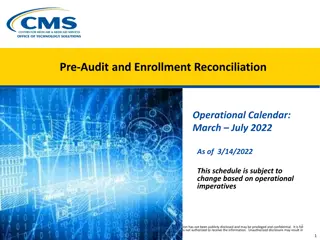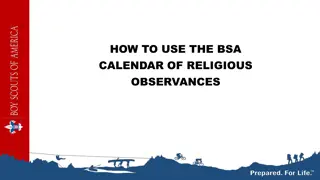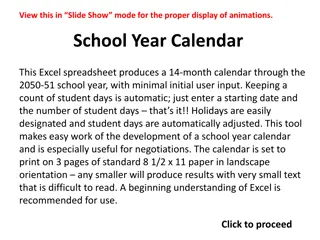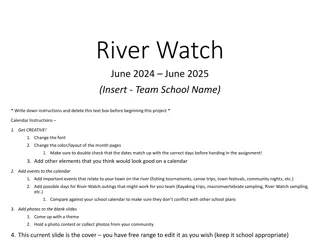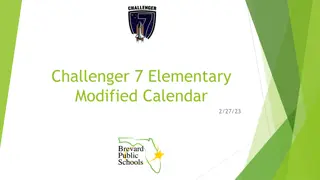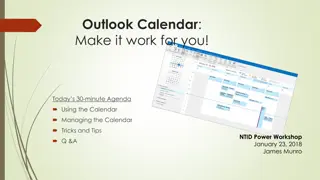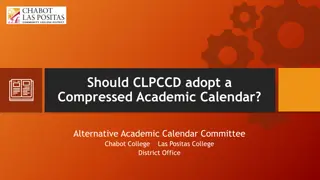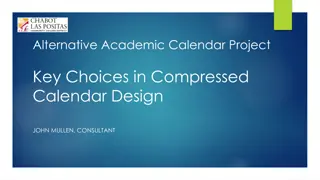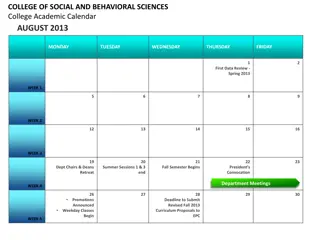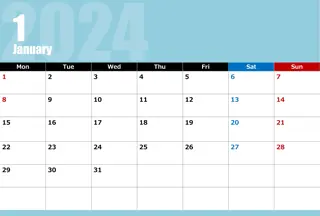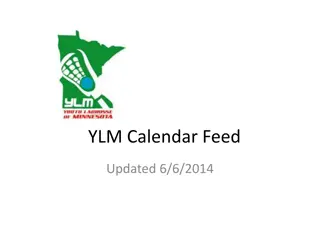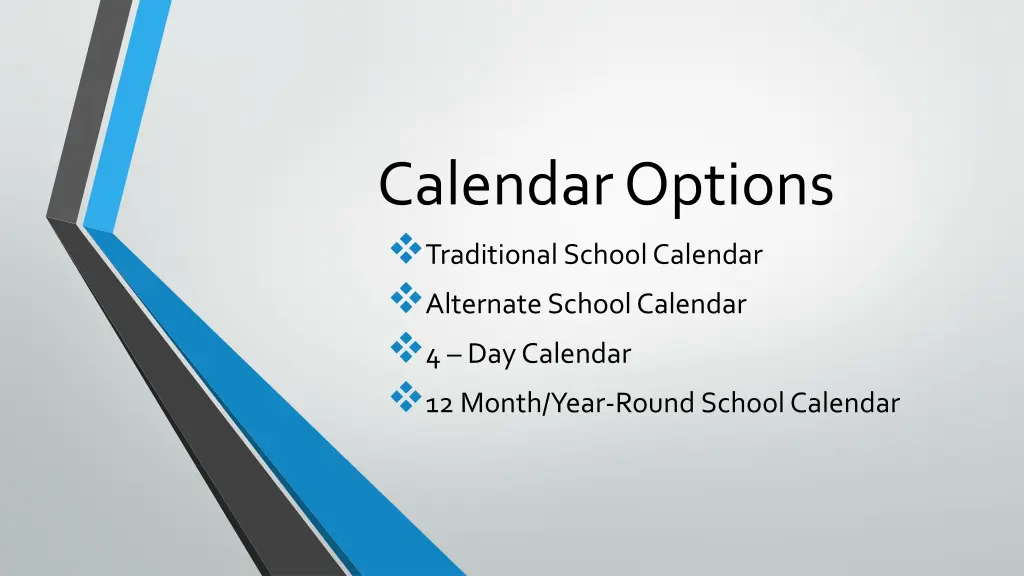
School Calendar Options: Traditional vs. Alternative Calendars Explained
Explore the differences between traditional and alternative school calendars, including the number of instructional hours, make-up days, and reporting period requirements. Learn how districts can choose between these options for their school year scheduling.
Download Presentation

Please find below an Image/Link to download the presentation.
The content on the website is provided AS IS for your information and personal use only. It may not be sold, licensed, or shared on other websites without obtaining consent from the author. If you encounter any issues during the download, it is possible that the publisher has removed the file from their server.
You are allowed to download the files provided on this website for personal or commercial use, subject to the condition that they are used lawfully. All files are the property of their respective owners.
The content on the website is provided AS IS for your information and personal use only. It may not be sold, licensed, or shared on other websites without obtaining consent from the author.
E N D
Presentation Transcript
Calendar Options Traditional School Calendar Alternate School Calendar 4 Day Calendar 12 Month/Year-Round School Calendar
Traditional Calendar A traditional school calendar consists of 178 days of student-teacher interaction with a school day defined as a day in which classes are in session and students receive at least six (6) hours of instructional time per day (or an average of 30 hours per week). Districts that implement a traditional school calendar must schedule at least 5 make-up days in case of school closure for exceptional or emergency circumstances. Date for the beginning of the school year to be determined by legislation 2023. The district is eligible for the use of alternative methods of instruction (AMI) granted under Ark. Code Ann.
Alternative School Calendar Instructional hours instead of instructional days. At least 1,068 hours of instructional time plus at least 30 make-up hours No minimum number of school days is required to meet 1,068 hours of instructional time, districts that implement an alternate school calendar must determine the number of daily instructional hours students will receive under the alternate calendar option and must establish an hour-to-day conversion based on a six-hour instructional day to determine student attendance, the number of days required in a teacher employment basic contract, and to comply with official reporting period requirements. For the purpose of tracking student attendance, student attendance will be tracked by minutes, which then will be converted to attendance days.Districts will have to start entering time in/out for students so that the number of minutes will be correct for attendance. For the purposes of meeting the number of days required in a basic teacher employment contract, a district that implements an alternate calendar must meet the hourly equivalent of 178 six-hour student-teacher interaction days (which is 1,068 instructional hours). The remaining contract days/hours can be fulfilled with additional student-teacher interaction, professional development, or scheduled district work days. Unless the district seeks and is approved for a waiver of the number of days (or their hourly equivalent) required for reporting period requirements, the official reporting period for attendance shall be quarterly with the number of hours counted in each period tobe no less than the equivalent of forty (40) six-hour instructional days and no more than the equivalent of fifty (50) six-hour instructional days. District calendars must reflect the conversion to instructional days for the calculation of reporting periods. When instructional time is missed for days unavoidably lost due to exceptional or emergency circumstances, the district will schedule make-up hours as needed using the scheduled make-up hours built into the school calendar. If additional make-up hours are needed, the public school district board of directors shall modify its alternate school calendar to include make-up hours for the additional instructional time needed to meet requirements. Under an alternate calendar, the district is NOTeligible to use alternative methods of instruction (AMI). Date for the beginning of the school year to be determined by legislation 2023.
4 -Day Under this option, a district must average thirty (30) hours per week. This can be met with four (4) 7 hour instructional days. For districts electing to operate on a four-day week basis, the official reporting period for attendance shall be quarterly with the actual number of days counted in each period to be not less than thirty-two (32) days nor more than forty (40) days. Some districts that are currently implementing a 4-day week calendar are still offering a 5th-day educational option for students to provide academic interventions, enrichment activities, access to services, etc. Date for the beginning of the school year to be determined by legislation 2023.
12 Month/Year-Round School Calendar Educational program in which all students attend school no less than 178 days; 6 hours of instruction daily or an average of 30 hours per week. Between July 1 and June 30 of each school year. No vacation, including summer, lasts more than seven (7) weeks.



